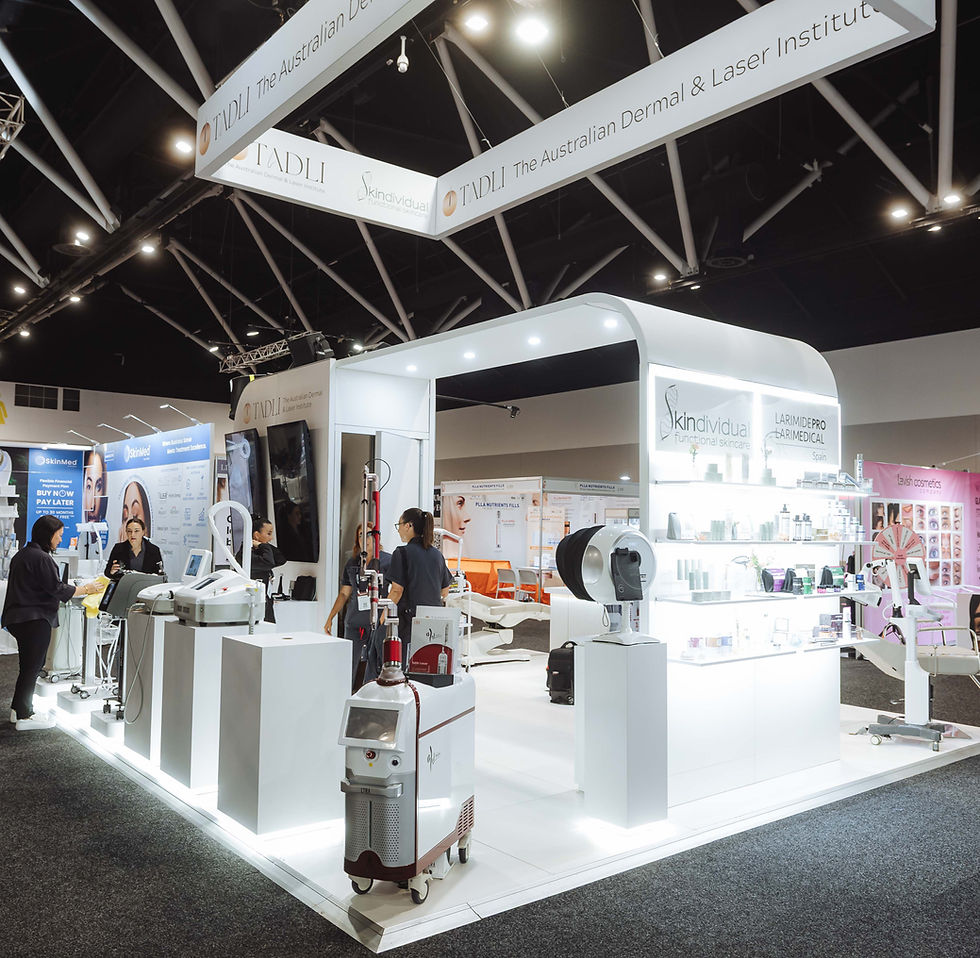HIFU vs. RF: Which Technology is Better for Skin Lifting and Tightening?
- Nancy Abdou

- Mar 10
- 3 min read
Updated: Sep 17
Your clinic seeks advanced treatments for skin lifting and tightening services but you face confusion between HIFU and RF technologies. Selecting the correct solution from innovative technologies presents a difficult decision process. The discussion about HIFU (High-Intensity Focused Ultrasound) against radio frequency (RF) devices stays front and center. Which technology delivers superior results? Your clinic's services and customer satisfaction depend on grasping these treatment options.
Let’s get into detail!
Know About the Technologies

The first thing that you should be informed of is what HIFU and RF technology bring to the table. The deep penetration of HIFU technology into the skin layers stimulates collagen production by using ultrasound energy. It targets specific areas, providing the lift and tightening many seek without invasive procedures. This method not only encourages the skin to rejuvenate itself but also helps create a firmer, more youthful appearance over time.
In contrast, RF (radio frequency device) uses electromagnetic waves to heat skin depths, which triggers collagen and elastin production in the area. RF technology enables clinic practitioners to address diverse skin conditions and types because of its flexible capabilities. Devices like the Apollo Duet offer personalised solutions, ensuring that therapists can modify treatments based on individual needs.
Effectiveness in Skin Lifting
The effectiveness of these technologies often comes down to their ability to produce visible results. HIFU has an edge when it comes to immediate lifting effects. Clients often see noticeable results right after treatment, which can be an appealing aspect for clinics, attracting those seeking quick solutions.

On the other hand, while RF may require more time for results to become apparent, its effectiveness shouldn't be underestimated. Over time, the cumulative effects of RF treatments can lead to significant improvements in skin texture and tightness. The gradual enhancement can be particularly appealing to clients who prefer a more understated approach.
Treatment Comfort and Experience
Client comfort is paramount in any aesthetic clinic. HIFU treatments are generally well-received, as the ultrasound technology minimises discomfort and focuses on targeted areas. Typically, sessions last around 30 to 90 minutes, depending on the area being treated, making it a convenient option for both clients and clinicians.
RF treatments, particularly with devices like the Apollo Duet, offer a warm sensation, often described as soothing. The duration of these treatments also ranges from 30 minutes to an hour, giving clinics the flexibility to accommodate various schedules. Providing a comfortable experience will likely lead to increased client satisfaction and loyalty.
Versatility in Application
RF technology demonstrates superior versatility in its applications. RF technology at clinics enables practitioners to use treatments both for facial tissue lifting and tightening while performing skin quality improvement and minimising wrinkles and fine lines. The Apollo Duet device stands out because it handles a broad spectrum of skin concerns while offering a complete solution for different client needs.

HIFU, while primarily focused on lifting and tightening, has its place in comprehensive treatment protocols too. By combining HIFU with other treatments, clinics can offer tailored packages that cater to clients' varied desires. Integrating modalities such as a cryofacial device after HIFU sessions can elevate the overall experience, providing immediate soothing and enhanced results.
Longevity of Results
Both HIFU and RF treatments can lead to long-lasting results with proper care. Clients who undergo HIFU sessions generally report enduring effects lasting anywhere from six months to a year. This durability is often a significant selling point for clinics looking to attract repeat business.
RF treatments, while potentially requiring more frequent appointments, also offer sustained improvements. The gradual nature of RF can lead to cumulative benefits that clients appreciate over time. This aspect is particularly relevant for clinics that emphasise long-term skin health in their offerings.
Training and Implementation
To fully utilise the potential of HIFU and RF technologies, comprehensive training is crucial. Collaborating with a reliable training partner ensures healthcare providers understand each device's functionalities and treatment protocols. Established providers, such as The Australian Dermal & Laser Institute (TADLI), offer tailored training solutions that meet the needs of various clinic staff members, from doctors to beauty therapists.
Investing in superior training not only enhances treatment outcomes but also solidifies your clinic's reputation in the competitive aesthetic landscape. Ensuring that staff members are well-educated on the intricacies of both HIFU and RF can lead to greater client satisfaction and positive business results.
Conclusion
The process of introducing advanced aesthetic devices to your medical facility remains straightforward. Average outcomes rely heavily on ongoing training programs, which lead directly to excellent team performance. The use of these devices will enable you to deliver your clients optimal results, which guarantees your clinic will emerge as a leader in aesthetic innovation.
Seek additional information regarding aesthetic device training by accessing TADLI's resources to advance your clinic's capabilities starting today.




Comments